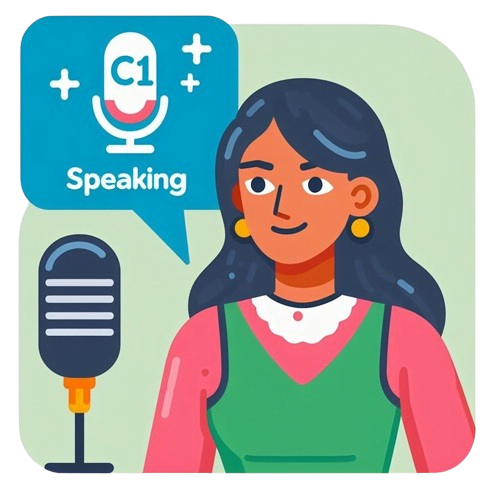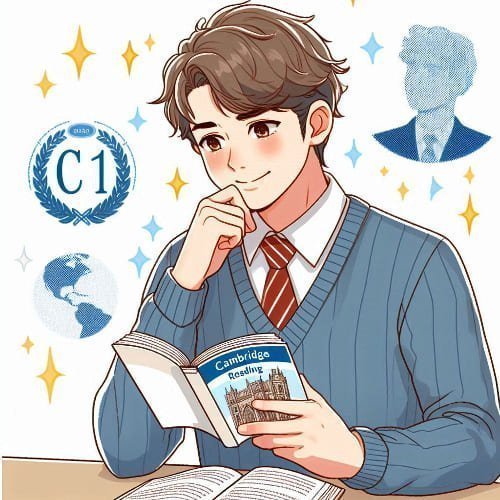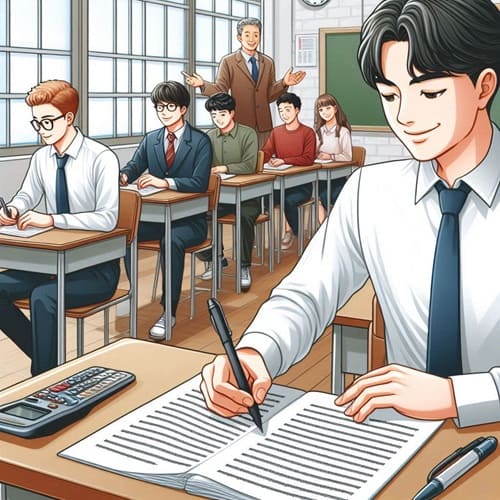Cambridge C1 (CAE): Reading and Use of English Part 5

Key Points
- Text Comprehension Skills: Requires understanding detailed information, opinions, and attitudes in a long text, tested through multiple-choice questions on main ideas, specific details, and inferences.
- Contribution to Your Score: Part 5 is crucial as it significantly impacts the overall score of the Reading and Use of English section, which accounts for 40% of the total exam score.
- Challenges and Strategies: Involves dealing with long and complex texts, unfamiliar vocabulary, and inference questions. Effective preparation includes regular practice with similar texts, vocabulary building, and developing focused reading strategies.
What you will find in this guide:
C1 (CAE) Reading and Use of English Part 5
The Cambridge C1 Advanced (CAE) exam is a rigorous test of English language proficiency, recognized globally by universities, employers, and governments. One of its most challenging components is the Reading and Use of English section, specifically Part 5. This section requires not just a good grasp of the language, but also strong analytical skills to interpret and respond to complex texts.
Part 5 of the Reading and Use of English paper is designed to assess your ability to understand detailed information, opinions, and attitudes presented in a long text. It typically involves a passage followed by six multiple-choice questions. These questions test various aspects of comprehension, including understanding the main idea, specific details, implications, and the writer’s tone and purpose (Cambridge English), (Exam English).
Why is this part crucial? Well, it contributes significantly to your overall score in the Reading and Use of English paper, which itself accounts for 40% of the total exam score (Exam English). Therefore, excelling in Part 5 can make a substantial difference in your final result, potentially tipping the balance between different grade bands.
The Structure of Part 5
Part 5 is straightforward in structure but challenging in execution. You’ll be presented with a single long text, which can range from a factual article to a more opinionated essay. Following the text are six multiple-choice questions, each offering four options from which you must select the correct one (Cambridge English).
These questions are crafted to test a variety of reading skills:
- Detail Understanding: Recognizing specific information mentioned in the text.
- Opinion and Tone: Identifying the author’s attitude or stance on a particular topic.
- Main Idea: Grasping the central theme or message of the text.
- Implication and Inference: Understanding what is implied but not explicitly stated.
- Text Organization Features: Noting how the text is structured, including the use of exemplification, comparison, and reference.
Why CAE Reading Part 5 Matters
Mastering Part 5 is not just about passing the exam; it’s about proving your ability to engage with and understand complex English texts. This skill is invaluable in both academic and professional settings, where you will often need to read and interpret detailed reports, research articles, or other substantive materials.
Moreover, regular practice and improvement in this area will enhance your overall English proficiency, making you a more confident and capable communicator. It’s a demanding part of the exam, but with the right strategies and consistent practice, you can excel.
In the following sections, we will dive deeper into effective reading strategies, step-by-step guides to answering questions, common pitfalls to avoid, and much more to help you succeed in Part 5 of the CAE Reading and Use of English exam.
If you’re interested in learning more about other parts of the CAE exam, check out my detailed guides on Reading and Use of English Part 3 and Reading and Use of English Part 4. These resources will provide you with comprehensive strategies to tackle each section of the test confidently.
Sample Question
Part 5
You are going to read a review of two books about the internet. For questions 31 – 36, choose the answer (A, B, C or D) which you think fits best according to the text.
Mark your answers on the separate answer sheet.
The internet today
James Baxter reviews two books about the internet: Rewire by Ethan Zuckerman, and Untangling the Web by Aleks Krotoski.
Open a street map of any city and you see a diagram of all the possible routes one could take in traversing or exploring it. Superimpose on the street map the actual traffic flows that are observed and you see quite a different city: one of flows. The flows show how people actually travel in the city, as distinct from how they could. This helps in thinking about the internet and digital technology generally. In itself, the technology has vast possibilities, as several recent books emphasise, but what we actually wind up doing with it is, at any point in time, largely unknown.
Ethan Zuckerman is excited by the possibilities the web provides for linking far-flung populations, for sampling different ways of life, for making us all digital cosmopolitans. His central thesis, however, is that while the internet does, in principle, enable everyone to become genuinely cosmopolitan, in practice it does nothing of the kind. As the philosopher Anthony Appiah puts it, true cosmopolitanism ‘challenges us to embrace what is rich, productive and creative’ about differences; in other words, to go beyond merely being tolerant of those who are different. Much of the early part of Rewire is taken up with demonstrating the extent to which the internet, and our use of it, fails that test.
‘We shape our tools,’ said the philosopher Marshall McLuhan, ‘and afterwards they shape us.’ This adage is corroborated every time most of us go online. We’ve built information tools (like search and social networking systems) that embody our biases towards things that affect those who are closest to us. They give us the information we think we want, but not necessarily the information we might need.
Despite all the connectivity, we are probably as ignorant about other societies as we were when television and newspapers were our main information sources. In fact, Zuckerman argues, in some ways we were better then, because serious mainstream media outlets saw it as their professional duty to ‘curate’ the flow of news; there were editorial gatekeepers who determined a ‘news agenda’ of what was and wasn’t important. But, as the internet went mainstream, we switched from curation to search, and the traditional gatekeepers became less powerful. In some respects, this was good because it weakened large multimedia conglomerates, but it had the unanticipated consequence of increasing the power of digital search tools – and, indirectly, the power of the corporations providing them.
Zuckerman – a true cosmopolitan who co-founded a web service dedicated to realising the net’s capacity to enable anyone’s voice to be heard – provides an instructive contrast to excessively optimistic narratives about the transformative power of networked technology, and a powerful diagnosis of what’s wrong. Where he runs out of steam somewhat is in contemplating possible solutions, of which he identifies three: ‘transparent translation’ – simply automated, accurate translation between all languages; ‘bridge figures’ – bloggers who explain ideas from one culture to another; and ‘engineered serendipity’ – basically, technology for enabling us to escape from filters that limit search and networking systems. Eventually, the technology will deliver transparent translation; cloning Ethan Zuckerman would provide a supply of bridge figures, but, for now, we will have to make do with pale imitations. Engineering serendipity, however, is a tougher proposition.
Aleks Krotoski might be able to help. She is a keen observer of our information ecosystem, and has been doing the conference rounds with an intriguing contraption called the ‘Serendipity Engine’, which is two parts art installation and one part teaching tool. Untangling the Web is a collection of 17 thoughtful essays on the impact of comprehensive networking on our lives. They cover the spectrum of stuff we need to think about – from the obvious (like privacy, identity and the social impact of the net) to topics which don’t receive enough attention (for example, what medics, with a sniff, call ‘cyberchondria’ – how the net can increase health anxieties).
Although she’s a glamorous media ‘star’ (having fronted a TV series about the internet), people underestimate Krotoski at their peril. She’s a rare combination of academic, geek, reporter and essayist, which her chapter on the concept of friendship online exemplifies: she’s read what the key social theorists say on the subject, but she’s also alert to what she experiences as ‘emotional anaemia’ – ‘the sense that…..you might not feel the online love from the people you should, because your nearest and dearest may be drowned out in the ocean of sociability.’ Which, in a way, brings us back to Zuckerman’s thoughts about the difference between what networked technology could do and what it actually does.
31- The reviewer starts with the metaphor of a city map in order to illustrate
- A- the difficulty in understanding the complexity of the internet.
- B- the degree to which the internet changes as time passes.
- C- the difference between potential and real internet use.
- D- the importance of the internet in people’s lives today.
32- What do the words ‘that test’ in line 13 refer to?
- A- providing more widespread access to information
- B- connecting in a substantial way with other cultures
- C- establishing principles for developing the internet
- D- accepting that not everyone in the world is the same
33- What point is made about the internet in the third paragraph?
- A- People often struggle to find what they are looking for on it.
- B- It influences how people relate to family and friends.
- C- All users have some responsibility for its evolution.
- D- The way in which it works is far from neutral.
34- What does the reviewer suggest about Zuckerman in the fifth paragraph?
- A- His recommendations are less impressive than his analysis.
- B- He uses terms that are harder to understand than need be.
- C- He has the same failings that he identifies in other people.
- D- His account of important developments is too negative.
35- Which of the following words is used to suggest disapproval?
- A- rounds (line 36)
- B- contraption (line 36)
- C- stuff (line 38)
- D- sniff (line 40)
36- What does the reviewer suggest about Aleks Krotoski in the final paragraph?
- A- Her insight into the nature of online friendship is perceptive.
- B- She has been influenced by Ethan Zuckerman.
- C- People are often misled by her academic credentials.
- D- She takes on too many different roles.
Potential Challenges
Part 5 of the Cambridge C1 Advanced (CAE) Reading and Use of English paper can be particularly daunting due to several inherent challenges. Understanding these challenges is the first step in effectively preparing for and overcoming them.
- Text Length: One of the primary challenges of Part 5 is the length of the text. Candidates are presented with a long passage, typically around 700-900 words. This can be overwhelming, especially under timed conditions. The extensive length requires sustained concentration and efficient time management to read and comprehend the entire text before tackling the questions. It’s crucial to practice reading longer passages regularly to build the stamina needed for this part of the exam.
- Text Complexity: The texts in Part 5 are not only long but also complex. They often feature advanced vocabulary, intricate sentence structures, and sophisticated ideas. The complexity can make it difficult to grasp the main points and finer details, increasing the risk of misunderstanding the author’s intent. Regularly reading a variety of complex English texts, such as academic articles, opinion pieces, and literary works, can help you become more comfortable with the level of difficulty you will encounter.
- Unfamiliar Words: Encountering unfamiliar words is another common challenge. While it’s normal to come across words you don’t know, it can be intimidating if these words are crucial for understanding the text. Developing strategies to deduce the meaning of unknown words from context is essential. Additionally, expanding your vocabulary through regular reading and the use of vocabulary-building tools can be highly beneficial.
- Inference: Part 5 frequently requires making inferences, which involves reading between the lines to understand what is implied rather than explicitly stated. This can be particularly challenging if the text is already complex and dense. Improving your inference skills involves practicing with similar texts and questions, and learning to recognize subtle clues within the text that hint at deeper meanings or conclusions.
- Maintaining Concentration: Given the length and complexity of the text, it’s easy to get lost or lose concentration while reading. This can lead to missing critical information or wasting time rereading sections. Developing techniques to stay focused, such as annotating the text, summarizing paragraphs, or breaking the text into manageable sections, can help maintain your concentration. Regular practice under timed conditions can also improve your ability to stay focused for extended periods.
Guide to Part 5
Now that we’ve identified the potential challenges of Part 5 in the Cambridge C1 Advanced (CAE) Reading and Use of English paper, let’s delve into practical strategies to manage and overcome these obstacles. By implementing these guides, you can enhance your comprehension skills and boost your confidence in tackling this demanding section of the exam.
Step 1:
Don’t read the passage, skip it and go directly to the questions. Read the given question to comprehend the general meaning of it. This may seem counterintuitive, but it is an effective technique to save time and avoid getting confused by the text.
Step 2:
Identify the keywords of the question to make sure you focus on what’s important. Keywords are the words that are most important in the question. Reading passages can be quite confusing at times. So, it is good idea to focus on what you are looking for, not the whole passage.
Step 3:
According to the keywords you identified, scan the text to see in which paragraph you may find the answer. Remember that the questions are presented in the order of paragraphs, so the answer to the second question is likely in the second paragraph.
Step 4:
Read the paragraph where the answer to the question can be found. Now that you know what to look for in the paragraph, read it carefully. Take your time to understand the context and main ideas presented in the paragraph. Now that you have saved some time by not reading the text, you can spend more time on digesting the meaning of the passage.
Step 5:
Read the options carefully. And identify their keywords. This helps you focus on the right information, and not get distracted by distractors placed in the options.
Step 6:
Eliminate the answer choices that are obviously wrong. This will help you narrow down your choices and increase your chances of getting the right answer.
Step 7:
Choose between the remaining two options Finally, use your logic and reasoning skills to choose between the remaining two options. Look for evidence in the paragraph that supports or contradicts each option. Choose the option that best matches what is stated or implied in the paragraph.
Important notes
1- The order of questions
Remember that the questions follow the order of the paragraphs in the text. For example, the first question is always about the first paragraph.
2- Distractors
You may have distractors in the answer choices (trick options that lead you to the wrong answer) so always be careful and try to focus on the idea you are looking for.
3- The keywords
identifying keywords in the questions and the options helps you stay on track and not get distracted by the tricks pulled in the questions and answer choices. So, make sure to always identify keywords.
Practice Test
Use the guide to practice Cambridge C1 (CAE) Reading and Use of English Part 5 using the following sample test.
Birds are present in our lives in so many ways – as pets, as part of many people ‘s diet, even as a source of inspiration that Glenda Hurst’s Birdlife is, in some respects , a welcome miscellany of fact and fiction. Her previous book , Gold, was a best-seller, and Hurst has, understandably, chosen to repeat a winning formula . In that book, each chapter focused on a different aspect of the metal, from its financial use to edible gold leaf, but the apparently random order of chapters meant Gold lacked continuity: there was no sense of the author presenting a case and leading us through the steps of her argument While each chapter was interesting enough in itself, overall the book seemed lightweight, a series of magazine articles. Nevertheless , Gold sold in large numbers, and I see no reason why Birdlife should not repeat that success.
Birds have played a role in myths for millennia, from ancient China to Egypt to Central America, and birds are often used as symbols: the dove to represent peace, the eagle for power and so on. In her chapter on mythology, Hurst takes the reader on a world tour at breakneck speed, but the lack of comparison and cross-referencing means that readers are often left to their own devices if they wish to interpret the information or identify similarities between cultures. Furthermore,this approach means that a fair amount of potentially tedious repetition is unavoidable. There is a great deal of detail and not enough synthesis, leaving the reader wondering what point, if any, is being made.
I enjoyed the chapter on birds working with human beings. It gives the familiar example of taking canaries into mines so that if methane or carbon dioxide is present, its effect on the bird gives the miners early warning of danger. However, I suspect I am not alone in being unfamiliar with the East African honeyguide, a wild bird which leads people to bee colonies. The men searching for honeycomb make specific noises, and when the honeyguide hears them, it replies, with a particular call that it restricts to that one situation. The people smoke out the bees and take the honeycomb, leaving a little as a reward for the bird – which in this way avoids having to tackle the bees itself. This is thought to be the only instance of birds in the wild deliberately communicating with human beings to the advantage of both parties.
An area that has seen a great deal of research in recent years is bird migration, a phenomenon that used to be totally misunderstood: a couple of centuries ago, it was thought that birds that disappeared for the winter were hiding in mud. We now know a great deal about migration. The Arctic tern, for instance, breeds in the Arctic, flies south to the Antarctic in August or September, arriving back in May or June – a round trip of over 70,000 kilometers. And the bird appears to be determined to reach its destination: even if fish are being caught below it, and birds that are not migrating dive down to steal some, the Arctic tern cannot be deflected from its journey. Although the Arctic tern holds the record, feats on this scale are far from rare.
Birdlife ends with a short epilogue in which Hurst lays out her vision of an ideal future: restoring habitats that have been transformed by drainage or by grubbing up hedges, in both cases to improve agriculture; from the birds’ point of view, their habitat is damaged or even destroyed. It is here that Hurst reveals her true colours, as food production comes a poor second to protecting an environment in which birds can thrive. Reverting to the farming methods of the past is a forlorn hope, however: she can hardly expect us to sacrifice the enormous increase in agricultural output that we have achieved, when even that is not enough to feed the world’s population.
While Birdlife has little to say to serious ornithologists, professional or amateur, if picked up in an airport bookshop or given as a present, it might well broaden the horizons of others .
31- The reviewer mentions Gold in order to
- A- emphasise the wide range of topics that Hurst covers in each book.
- B- explain what he sees as a weakness in Hurst’s approach.
- C- support his opinion that Birdlife deserves to be very popular.
- D- express his disappointment with Birdlife in comparison with Gold.
32- The reviewer suggests that in the chapter on birds in mythology, Hurst
- A- misses opportunities to draw conclusions from the information she presents.
- B- misunderstands the significance of some of the myths that she mentions.
- C- uses repetition rather than discussion to support her interpretations.
- D- tries to cover too wide a range of cultures.
33- The reviewer refers to the honeyguide to suggest that birds
- A- and human beings can co-operate to their mutual benefit.
- B- can be trained to assist human beings.
- C- could be exploited by human beings to a greater extent.
- D- are not as useful to human beings as is sometimes claimed.
34- The phrase ‘feats on this scale’ (Iine 27) refers to the ability of some birds to
- A- avoid getting distracted.
- B- survive without eating.
- C- live in cold climates .
- D- fly long distances.
35- What does the reviewer say about the epilogue?
- A- It overestimates the damage done to birds by changes in agriculture.
- B- It reveals Hurst’s lack of understanding of certain subjects.
- C- It is unlikely to have the effect that Hurst would like.
- D- It convinced him that Hurst’s concern for birds is justified.
36- In the text as a whole, the reviewer gives the impression of thinking that Birdlife
- A- reveals how much more there is to discover about its subject.
- B- is readable without providing new insights into the subject.
- C- provides a clear overview of a subject with many facets.
- D- is unusual in bringing together diverse aspects of the subject.
References
How was your experience?
Describe your experience taking Cambridge C1 (CAE) Reading and Use of English Part 5 in the comment section below.







The second part is more difficult for me since we must choose between other options that seem to be the correct answers, it is mostly confusing but I would have to have the opportunity to read over and over again to get an answer.
My experience was good since I was be able to do it better than the other parts because I followed the teacher’s advice and the tips from the page to.
I think it is a difficult part since new terms and words are used. Therefore I think that to pass this part of the exam I must study vocabulary.On the other hand, we must take into account that the reading is in order of questions, which is an advantage to complete it
For me, this part is kind of difficult because you need to use our logic and our critical thinking to answer the questions.
This part is easy in comparison to the part 4, but that no meaning that is easiest, we need to think and be very careful with the distractors and options that are similar but not the correct